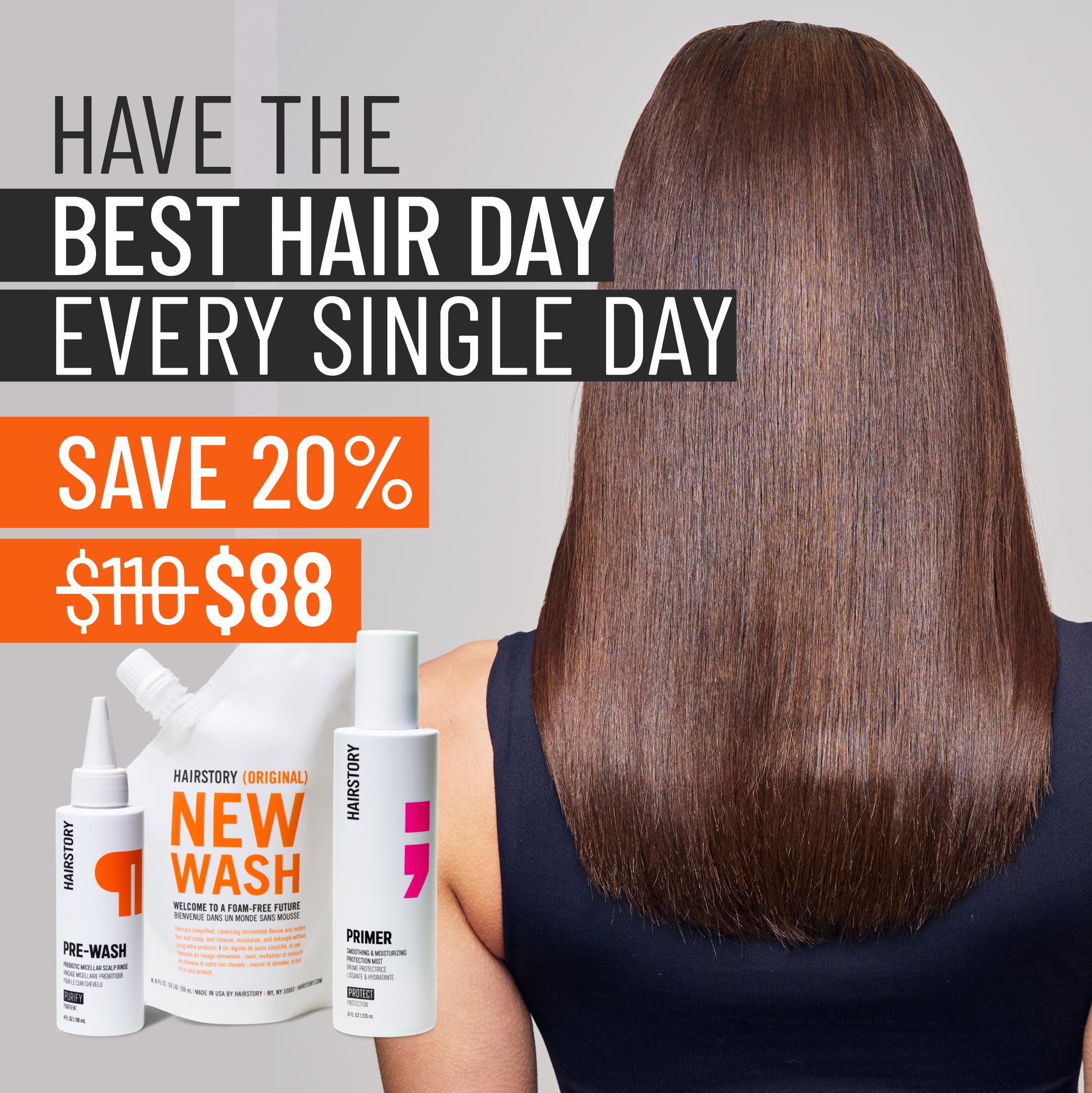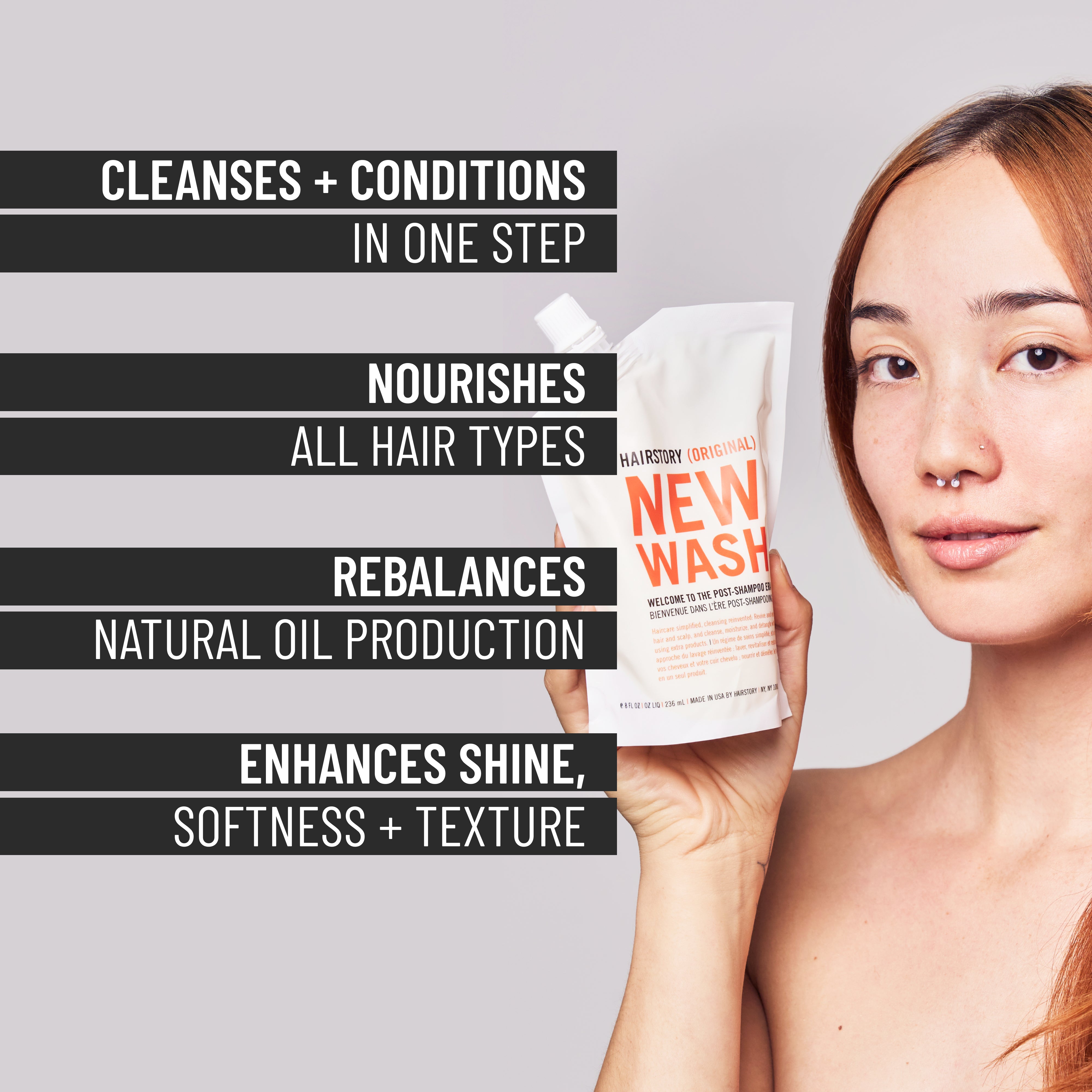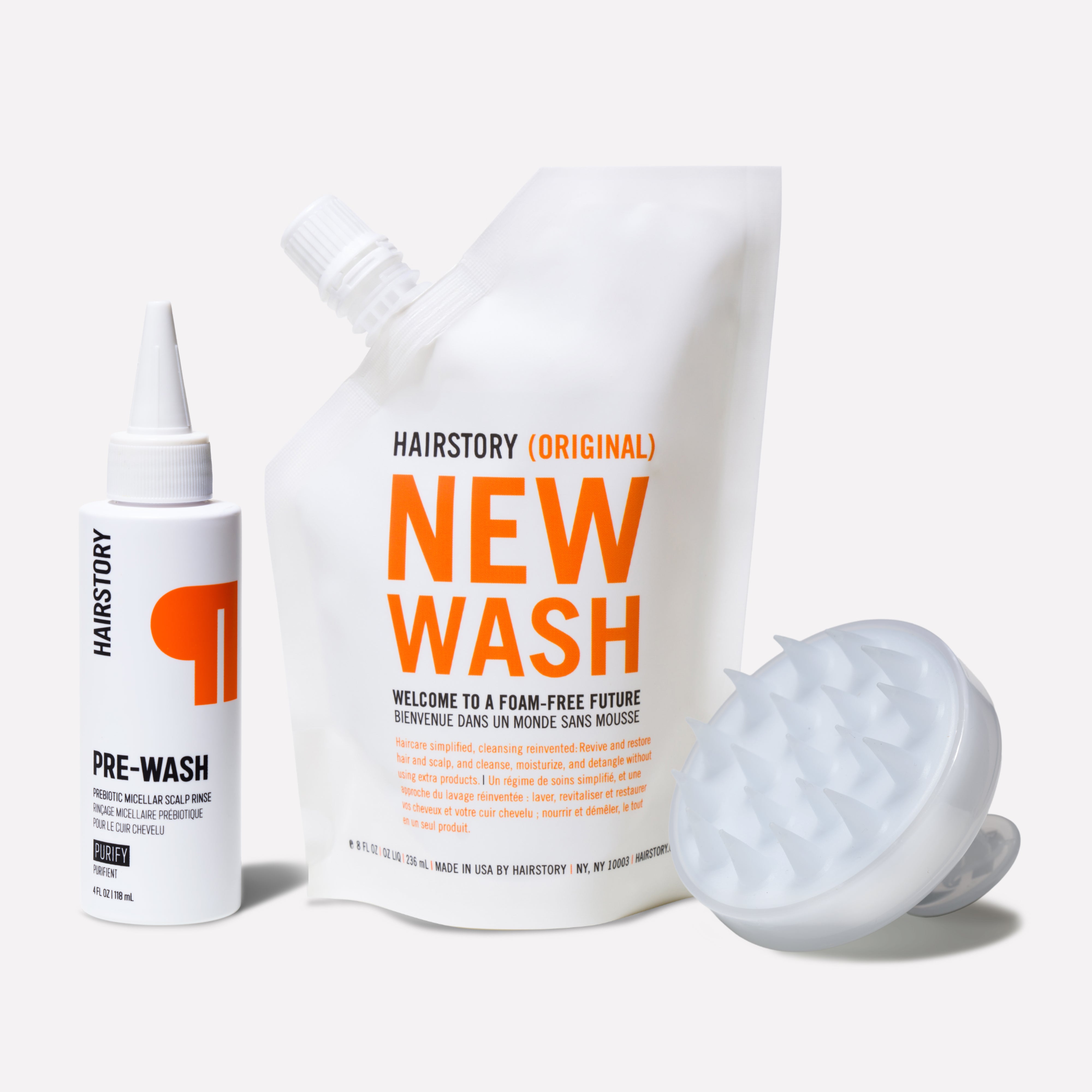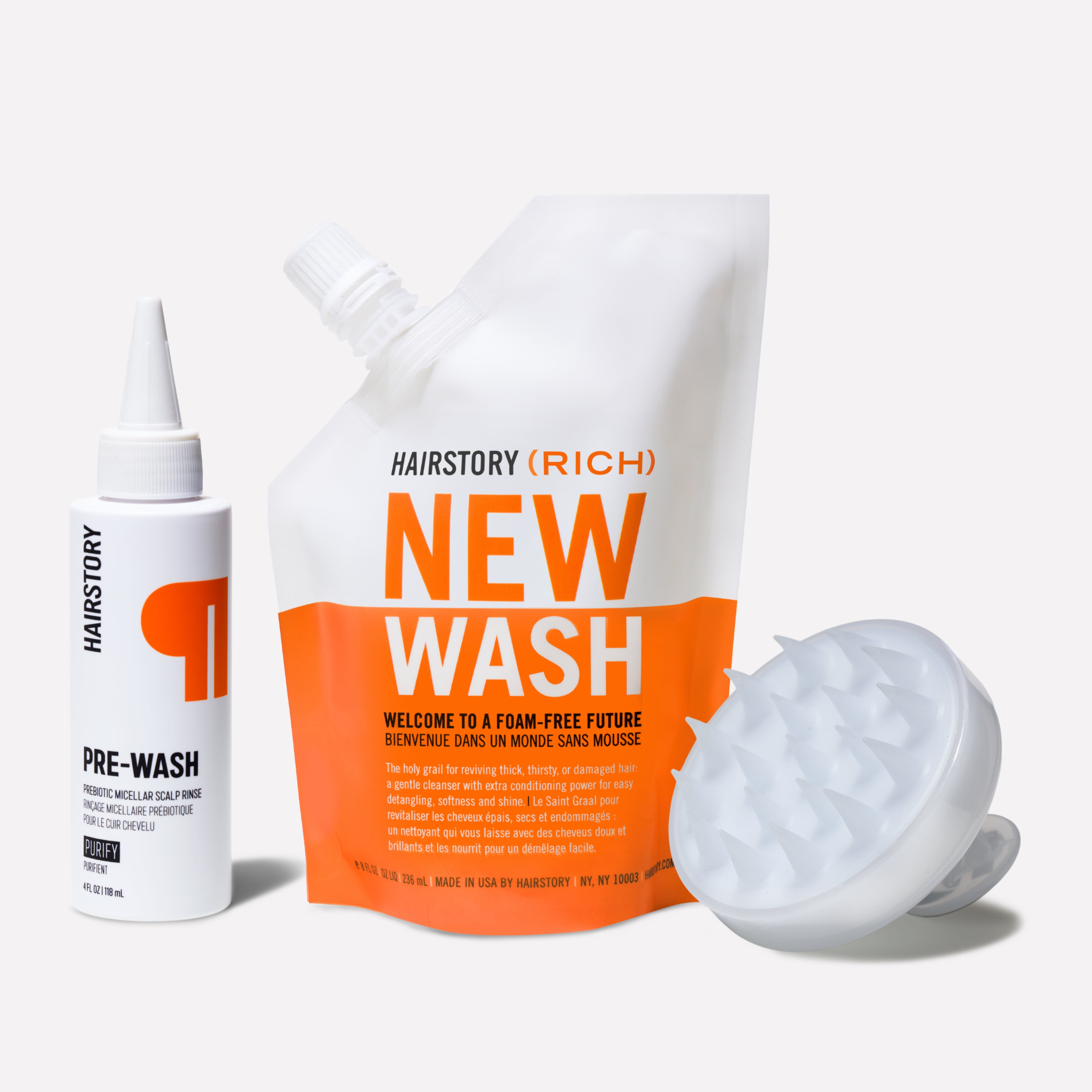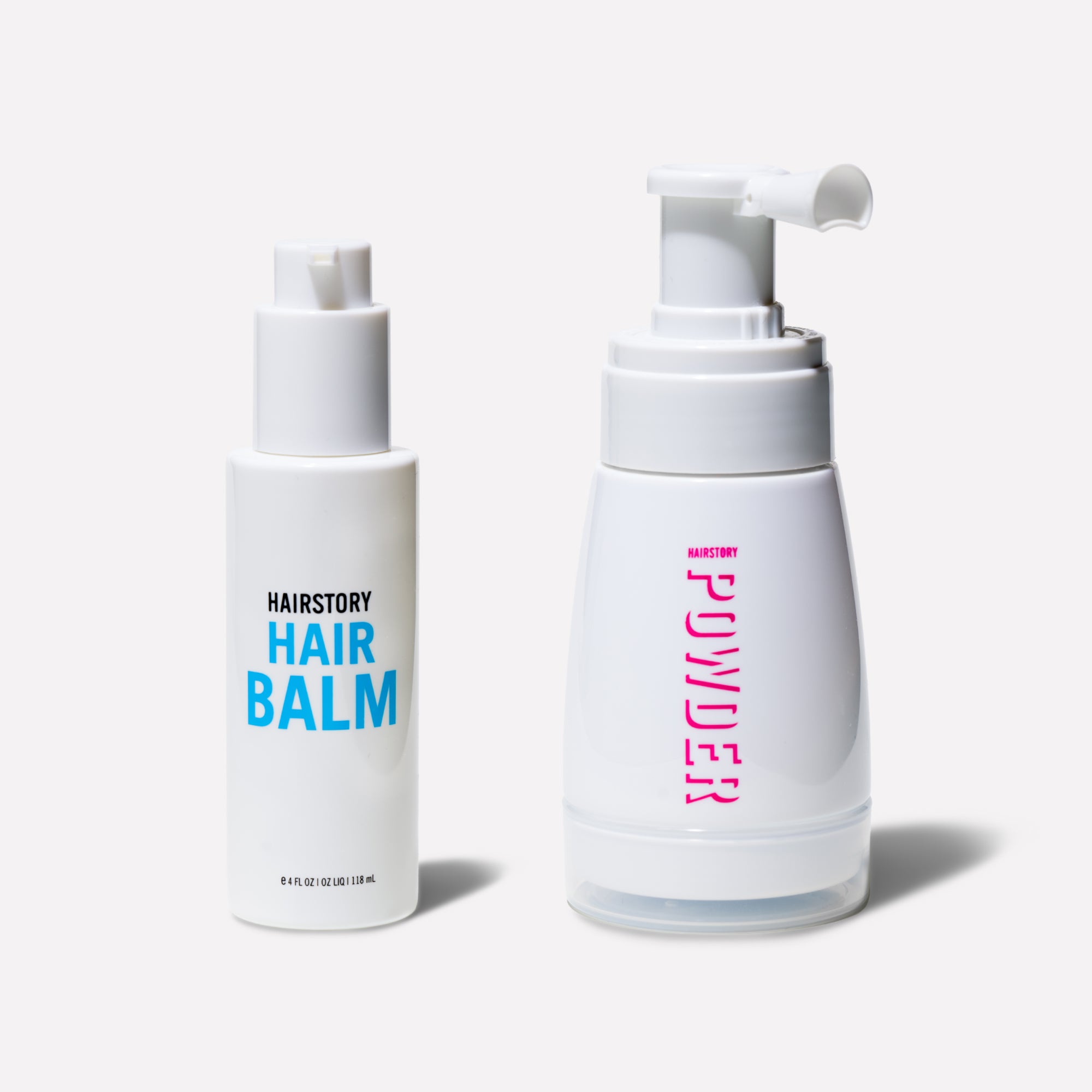If you think your hair is healthy, you probably wouldn’t be reading this. But if it’s not, you’re not alone. With the right hair care routine and the right hair products, you'll be on your way to healthier hair in no time.
The better you understand hair, the better you can maintain it. Structurally, hair strands consist of three layers: An inner fiber called the medulla, a middle layer called the cortex (where color resides, natural and otherwise) – sealed within an outer shell called the cuticle, which ideally is flat, smooth, and reflective so it appears glossy when healthy. But when hair is damaged, the cuticle is raised, possibly chipped, and probably fragile. This makes hair tangle easily and lose its luster.
Hair is very much like a delicate fabric, and you wouldn’t wash your one-and-only cashmere sweater in harsh detergent and bleach and then throw it into a hot dryer, would you? Of course not! So think about caring for your hair with the same TLC. Take a look at these healthy hair tips:
1. Washing: Stop Using Shampoo
Washing rule number one: sulfates do not belong on your hair (or anywhere else on your body, for that matter). These potentially toxic chemicals give shampoos their suds, but they can also dry out hair, and strip color and natural oils. Cleaning floors? Maybe. Washing hair? Never.
You wouldn’t wash your one-and-only cashmere sweater in harsh detergent and bleach and then throw it into a hot dryer, would you? Of course not!
Instead, look into sulfate-free alternatives! Naturally, we recommend New Wash; this hair wash cleans with a special blend of Aloe Vera and essential oils and no detergent. It doesn’t even lather (a small sacrifice for much better hair). By no longer stripping hair of its natural oils like traditional shampoo and conditioner do, the hair maintains its protective barrier which means no more over-production of oil (goodbye, oily hair!), less hair breakage and hair loss, longer lasting hair color and overall shinier, healthier hair.
2. Extend Time Between Washes with Dry Shampoo
We’re hardly the only ones who recommend that you wash as infrequently as you can manage, and we love dry shampoo or hair powder to keep hair fresh and oil-free in between. But over-reliance on it can be problematic (see the section below on scalps) as it can build up on the scalp and suffocate follicles, which can lead to thinning and loss.
3. Massage The Scalp
Anything that builds up on your scalp can compromise the health of follicles, potentially reducing the diameter of each hair as it grows, or inhibiting growth altogether. A thorough scalp massage on a regular basis is a simple and sensual act of self-care that also promotes robust growth – we recommend a shower a scalp massage brush to help release dead skin and stimulate blood flow to bring more nutrients to your roots.
4. Limit Heat Styling
Hot tools are cool – until you get burned. High-heat styling can strip away the cuticle or burn it, and your hair will never hold the body or wave you’re trying to create. Try to avoid heat altogether where possible by choosing hair styling products that add texture, volume and hold. If you must use heat, keep heat settings under 400°F, more than enough for any style. Follow these tips:
Style like a pro: Choose professional grade appliances.
- One heat setting does not fit all: Find tools with adjustable temperature settings.
- Know your limit: Try not to heat style more than twice a week.
- Protect from the heat: Use a thermal heat protectant that offers some hold while also preventing damage (like our heat styling spray).
- Work quickly: Limit contact and minimize exposure.
- Pull the plug: Cool it at the first signs of chronic dryness or split ends.
Don’t assume a heat protectant is a get-out-of-damage-free card. Use all precautions, always. Do choose a product that contains copolymers, proteins, and essential oils – to both insulate hair from heat and prevent moisture loss – such as Hairstory Dressed Up.
5. Limit Dryness that Leads to Damage
Hundreds of products on the market promise to revive, restore and heal dry, damaged hair. But those promises are somewhat hollow because there’s no way to actually heal damaged hair. Hair is not living tissue that can regenerate – no nerves, no blood, no living cells.
Products on the market promise to revive, restore and heal dry, damaged hair. But... there’s no way to actually heal damaged hair.
Yes, high-quality oil, leave-in conditioner, and treatments can disguise issues for a while and improve the look and feel, but the root problem will still be a problem. Read more about treating dry hair.
6. Cut Split Ends
The only solution for frayed tips: A good trim on a regular basis. Holding onto damaged ends because you’re attached to your length is a zero-sum game. If they’re not surgically removed, strands will split even farther and faster, and you’ll be going short in no time.
7. Eat a Well-Balanced Diet with Plenty of Protein
Nutritional deficiency can affect both hair growth and condition. A wide range of healthy foods, such as nuts, seeds, fruits, vegetables, lean protein, and healthy fats will best support healthy hair. A well-balanced diet is a key element in how to get healthy hair. Eating the same few foods over and over is a sure way to limit necessary nutrients – and discourage diversity in the gut microbiome.
Protein is key to hair health, which makes sense since hair consists primarily of protein, and research shows not getting enough can result in thinning hair. In addition, foods that provide zinc (oysters and pumpkin seeds), omega-3 fatty acids (salmon, sardines, navy beans, flaxseed oil, chia seeds) and biotin (eggs) have all been linked to healthy hair growth.
Protein is key to hair health, which makes sense since hair consists primarily of protein, and research shows not getting enough can result in thinning hair.
Foods rich in vitamin C (citrus, of course, but also Brussels sprouts, broccoli, red pepper, kale, strawberries, and kiwi) have been shown to have antioxidant properties to protect follicles from free-radical damage that inhibits optimal hair growth. Vitamin C also plays an important role in producing collagen, which helps strengthen hair.
Hair loss can be caused by iron deficiency, so stock up on spinach. Fresh ginger root is rich in magnesium, phosphorus, vitamins and potassium, all required for strong hair and natural shine. And don’t forget Vitamin E, found in almonds, among other foods.
In general, opt for whole, unprocessed foods as often as possible. And drink plenty of water!
8. Brush Your Hair and Invest in Quality Brushes
Nothing beats your natural oils to keep hair properly moisturized, and nothing beats brushing to guide them from the scalp to the harder-to-reach and naturally dryer areas toward the ends. Consider a round brush for blow-drying, and a Mason Pearson brush for styling. Opt for boar bristles or a boar/nylon combo over plastic or metal. And be gentle with your scalp.
Good brushes might be pricey, but if you look after them properly, they could last a lifetime. Keep them clean and free of hair, oil, and products by washing them in a mixture of baking soda and warm water – or a mild shampoo – at least once a month.
9. Think Lovely Thoughts
This next bit might sound a little “out there” to some of you, but when you have a negative relationship with your body – including your hair – and you express loathing and hostility toward it, you short-circuit your ability to radiate beauty. Thoughts are powerful, and when your personal energy field is vibrating with pain, hate, or sadness – as opposed to self-acceptance – a negative reality is created with detrimental effects. Hurtful, judgmental thoughts literally degrade the body and its parts. So be kind to yourself – and your crowning glory.


